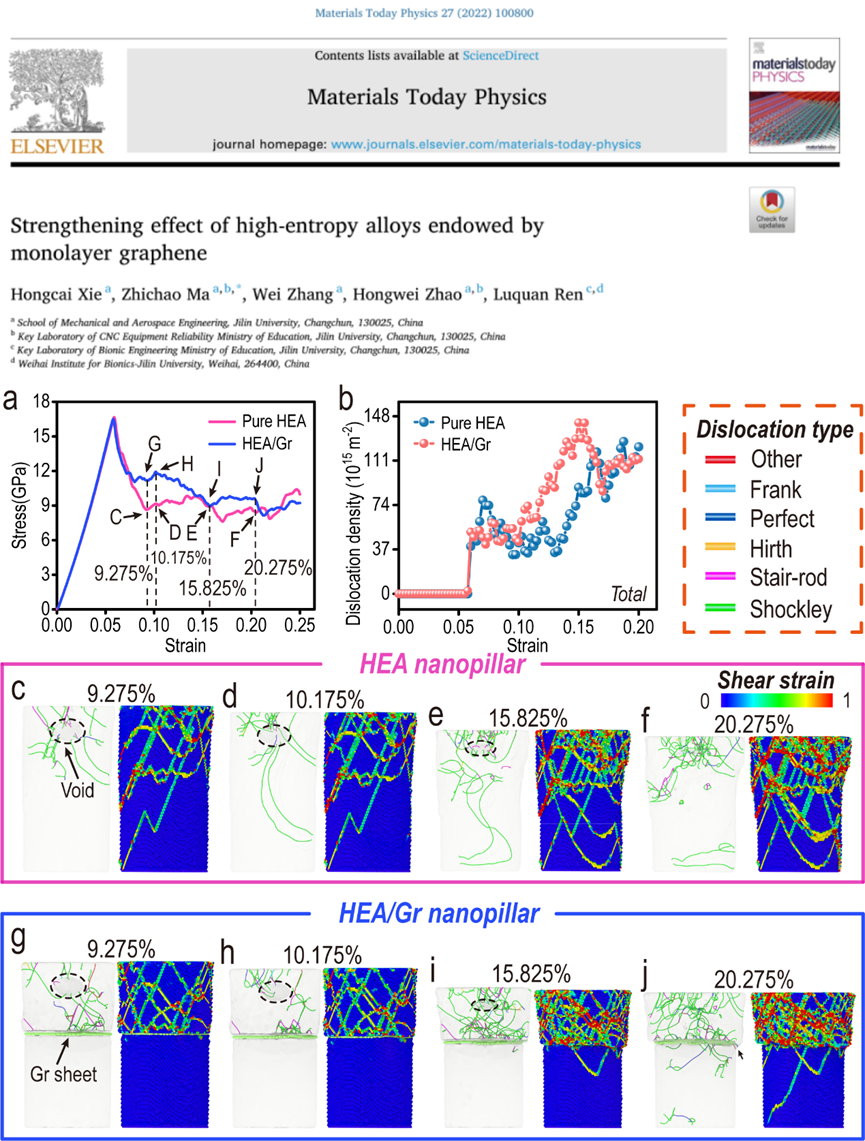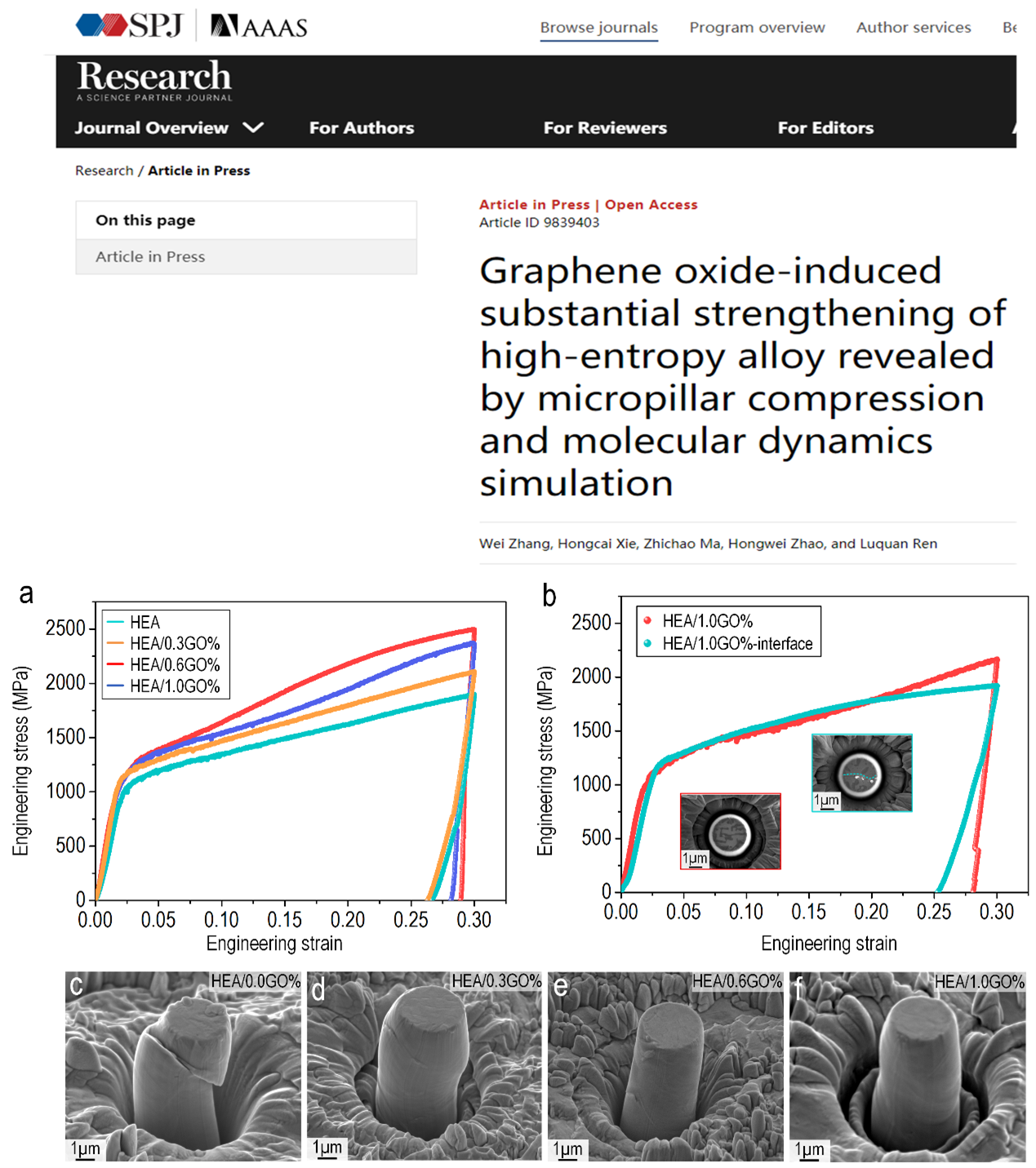High-entropy alloys, characterized by a mixture of various main components, show great potential in functional and structural application by virtue of their excellent mechanical properties. It is urgent to formulate new strategies to further improve its mechanical properties. Graphene can effectively confine dislocation propagation, allowing for the pronounced strengthening effect. However, due to the technical limitation of achieving atomic resolution, the understanding of the potential strengthening mechanism of graphene-reinforced high-entropy alloy composites is still not deep enough. Based on the molecular dynamics simulation method, the interaction between dislocation and interface in FeNiCrCoCu high-entropy alloy/graphene layered composites was studied. The simulation results confirmed that the insertion of the graphene layer changed the deformation mechanism of the matrix substantially. Specifically, as an impermeable interface, it not only effectively inhibits the propagation of mobile dislocations, but also effectively promotes the stronger interaction between dislocations above the interface, thus forming a large number of stable immobile Stair-rod dislocations. At the same time, the reduction of dislocation length caused by dislocation reactions and the absorption effect of interface on mobile dislocations induce more significant dislocation starvation, which further promotes the above strengthening process.

On the premise of molecular dynamics verifying the feasibility of graphene oxide (GO)-reinforced high-entropy alloy, high-entropy alloy matrix composites with different concentrations of GO reinforcing phases (0.3 wt%, 0.6 wt%, and 1.0 wt%) were prepared by spark plasma sintering technology. The results of the in-situ micropillar compression test of composites show that when GO content is less than 0.6 wt%, the compressive strength is positively correlated with GO content. When the content of GO is more than 0.6 wt%, the strength of the composites begins to decrease. By comparing the in-situ compression test results of the bounded micropillar (with GO aggregation) and the unbounded micropillar (with GO uniform distribution), it is found that the strain hardening phenomenon of the bounded micropillar gradually decreases with the increase of strain, which indicates that too much GO content leads to agglomeration, weakens the strain hardening and finally affects the compressive strength.

The research was supported by the National Natural Science Foundation of China (51875241) and the Jilin Province Key R&D Plan Project (YDZJ202101ZYTS129). The correlative paper “Strengthening effect of high-entropy alloys endowed by monolayer graphene” was published in the well-known academic journalMaterials Today Physics(IF: 11.0211, Dr. Xie Hongcai as the first author), and another correlative paper “Graphene oxide-induced substantial strengthening of high-entropy alloy revealed by micropillar compression and molecular dynamics simulation” was published inResearch(IF: 11.0359, Dr. Zhang Wei and Dr. Xie Hongcai as the co-first author). Academician Ren Luquan and Prof. Zhao Hongwei gave careful guidance. Prof. Ma Zhichao is the corresponding author of the above two papers.
It is reported thatResearchis an international high-level comprehensive large-scale sci-tech journal founded in 2018, and is the first cooperative journal ofSciencesince its foundation in 1880.Sciencewill provide an international publishing platform and promotion service forResearch.
Link to paper 1: https://doi.org/10.1016/j.mtphys.2022.100800
Link to paper 2: https://spj.sciencemag.org/journals/research/aip/9839403/